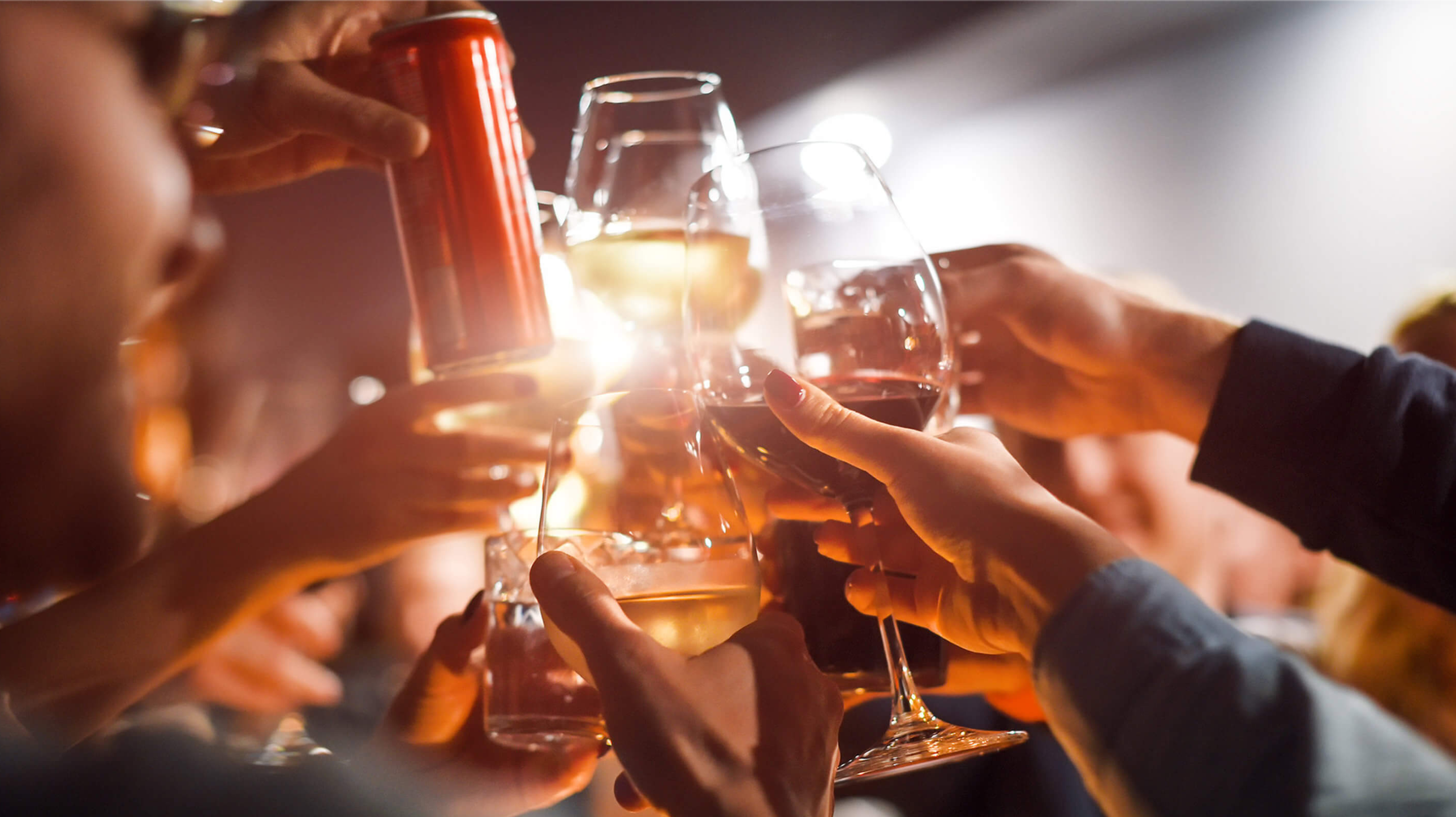
The enjoyment of fermented drink is a tradition as old as time, with alcohol-based drinks appearing as early as 7000 B.C. China. Studies even suggest that drinking alcohol pre-dates humans. The ability to metabolize alcohol appeared in our primate ancestors between 7 – 21 million years ago.
For as long as humankind has believed in deities, there have been rituals to call upon their favor. Thus, it was only natural for our ancient ancestors to lift their beloved beverage up to the gods and honor them with a ceremonial sip.

Millenia later, the ceremony lives on, along with our fondness for boozy celebration.
But beyond just offering a benediction, why do we clink our glasses together? And why is it called a “toast”?
Getting Toasted
Reference to “the toast” is found as early as the 16th century, when a literal piece of toast was added to a barrel of wine or beer. Back when beer and wine were the more common (and safer) choice over water, busy brewers weren’t as picky about refining the taste. Instead, they relied on additives like bread, spices or fruits to improve the flavor.

Adding bread served a dual purpose. Not only did the charcoal on the toast perfectly soak up the acidity of the alcohol and make it less bitter, but it gave purpose to stale loaves that otherwise would have been tossed.
As the years went on, adding a piece of toast to the tankard of ale before it was passed around the drinking hall evolved from necessity to tradition.
Whoever was being honored by that round of drink would be given the boozy piece of toast to enjoy.
Enter the Toastmasters
On into the Middle Ages, if people weren’t toiling, they were toasting. By the 17th century, frequent barroom brawls and elaborate ceremony necessitated the invention of the Toastmaster. This booze hall monitor was responsible for making sure everyone had an equal opportunity to lead a toast, and the rituals didn’t get too far out of hand.
As an example, some ceremonies involved cutting ones one flesh and mixing blood with the drink. One can imagine that brandishing knives after a long evening of toasting might not always end well.
Today, the organization Toastmasters International teaches members the art of leadership and effective public speaking.

Clinking Ones Drink
During the superstitious Medieval ages, a loud cheer was raised and mugs clinked or banged on the table to scare off any evil spirits. A bit of ale might even have been spilled on the floor to lure thirsty demons away.
One common belief is that knocking two glasses together dispelled suspicion against poisoning. As mugs were banged together, liquid would spill from one glass and into the other, effectively carrying any poison with it. If your drinking buddy hesitated before his next sip, you might suspect foul play.
For a simpler and more likely explanation, the clinking of the glass is just part of the sensory experience of enjoying a ceremonial sip with friends.

Toasting Traditions
Along with elaborate song, speech and ceremony (such as drinking out of a bride’s shoe), toasts are often steeped with superstition.
In Europe, not making eye contact while toasting is said to curse the offender to 7 years of bad sex.
U.S. Naval folklore warns that toasting with water will lead to death by drowning. Air Force Protocol dictates that one should only resort to toasting with water under extreme duress, such as when a prisoner of war.
It’s also considered bad luck to put a glass with alcohol back on the table. Hence, the call for “bottoms up!” demanded the glass be inverted on the table to prove no drop had been left behind.
